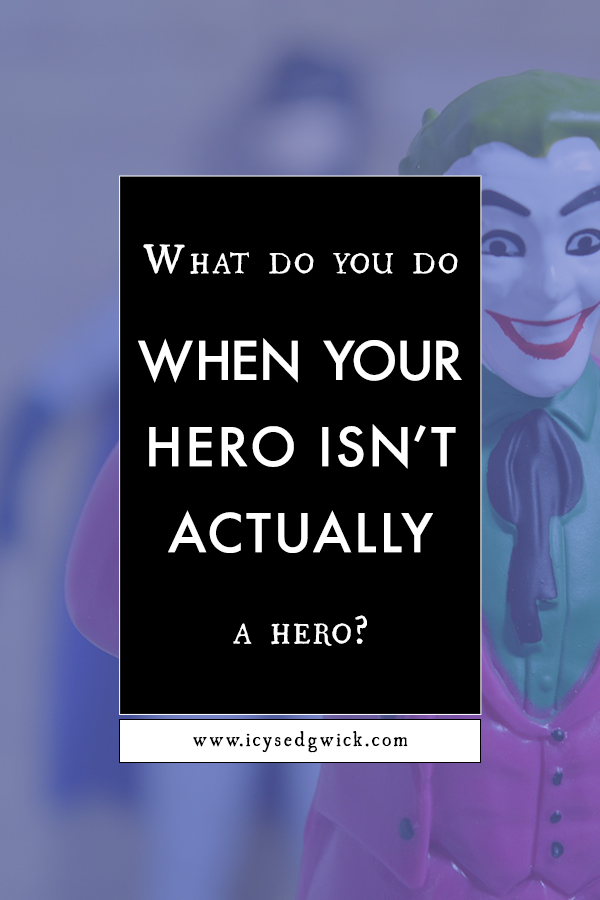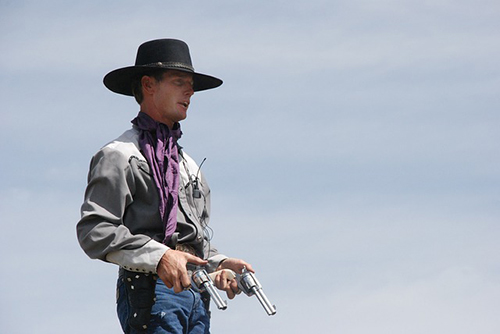Writing a hero can be a tricky business.
You don’t want to run the risk of the ‘Luke Skywalker’ syndrome, where your hero is less interesting than your sidekick.
But if your hero does morally questionable things, will the reader forgive him or her?
The anti-hero is a fascinating form of protagonist, and can help us to answer the question…
What do you do when your hero isn’t actually a hero?

And I looked, and behold a pale horse: and his name that sat on him was Death, and Hell followed with him’.
Revelation 6:8, King James Bible.
I know this is a column for writers, but I’m going to use Pale Rider (1985) as my case study here.
It might be a slow burner in places, but I’d expect nothing else from Clint Eastwood. Yet despite its similarities to the earlier High Plains Drifter (1973), we can lot to learn from the film’s use of character.

Particularly regarding antagonists and protagonists.
The plot, in a nutshell, is fairly simple. Set sometime in 1880s California, a small mining camp has grown up alongside a stream believed to contain gold.
Local mine owner Coy Lahood (Richard Dysart) sends his thugs to vandalise the camp in an effort to force the people to leave. The thugs shoot a small dog belonging to a teenaged girl, Megan (Sydney Penny), who prays for a miracle while burying her pet.
Lo and behold, a man known only as Preacher (Clint Eastwood) turns up, and manages to galvanise the camp into staying put, and fighting for their claims. Lahood calls in a corrupt marshal, named Stockburn (John Russell), and the stage is set for the final showdown.
Spoilers ahead, if you haven’t seen it, though in all honesty, you’d probably be able to guess the ending anyway!
Your real hero can hide in plain sight.
The notion of an outsider coming in to help a group of people against a violent threat sounds similar to High Plains Drifter. But Preacher is a more positive figure than that of the Drifter.
Also, the townsfolk of High Plains Drifter were guilty of earlier crimes. Here, the campfolk of Pale Rider have committed no crime, and are innocent, making Preacher a protector.
Yet he isn’t actually the hero – he’s a facillitator.
It’s important to establish in any story who your hero and villain actually are.
In Pale Rider, Coy Lahood is clearly the antagonist. He wants the camp gone, and he’ll do anything to get his way.
You might initially think the protagonist is Preacher, but you’d be wrong. The real protagonist is miner Hull Barrett (Michael Moriarty).
Show the hero’s bravery early on.
We see Hull demonstrating both bravery and determination early in the film.
Once the initial raid is over, it is Hull who ventures into town. That’s despite a beating on an earlier visit. He refuses to be cowed by Lahood and his men.
It is also Hull who repeatedly tries to break a massive boulder in a stream, a boulder he believes hides a gold vein.
Hull finds gold, proving his belief. He uses it to pay the camp’s debts in the nearby town. He tells Preacher that he won’t blast the rock as it will destroy the course of the stream. This sets him in direct comparison with Lahood who blasts anything that gets in his way, regardless of what it does to the landscape.
Hull takes in Megan and her mother Sarah (Carrie Snodgress) after Sarah’s husband abandoned her. But he doesn’t force her into marriage until she’s ready for it.
Hull isn’t overtly presented as a hero, but his actions portray him that way.
Characters in the film refer to him as “decent” and “good”, and he shows he is both of these. He isn’t the same man of action and obvious hero as Preacher. But his stirring speech to the camp when they consider selling up also cements him as a ‘go to’ guy.

Your hero needs a conflict to resolve.
The film sets up Preacher as the character who must face down the bad guy.
Through a vague reference to a history with Stockburn, we realise that the shoot out will be between this pair.
It’s difficult to consider Stockburn as an antagonist because he’s just a gun for fire.
In the same way, Preacher can’t be the antagonist since he shows up after Hull.
Hull initially attempts to accompany Preacher into town. Preacher destroys Lahood’s mining operation and chases away Hull’s horse to keep Hull out of harm’s way.
Preacher heads into town and has his shoot out with Stockburn. Lahood lives and attempts to shoot Preacher. Hull appears, having walked into town, and shoots Lahood.

The hero defeats the villain with the help of a facilitator.
Preacher both awakens and illuminates heroic qualities within Hull to enable him to become the hero of the story.
That way, Hull can remain the hero even after Preacher leaves.
So your ‘biggest’ character doesn’t have to be the hero.
Your protagonist needn’t necessarily be the guy who comes in all guns blazing. He should be the guy who develops and grows throughout the narrative, even if he needs help to do so.
Don’t be afraid to give your hero a helping hand!
If you like your Westerns gritty or pulpy, my novella, The Guns of Retribution, is just $1.99 for Kindle through Amazon!
Keen to improve your writing?
Grab your list of my top 5 blogs, books, and podcasts for fiction writers below!






I saw Pale Rider in the theater when it first came out. Powerful, and a different kind of role for Eastwood.
This is really well-thought out, and thought provoking. I’d expect nothing less from a cinema doctoral candidate, though.
That sounds like a fascinating wrinkle on the Yojimbo formula. You’re getting me to add things to my Netflix queue.